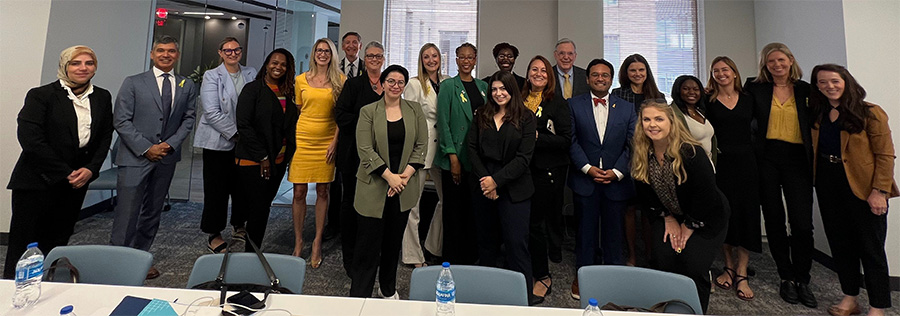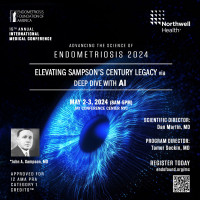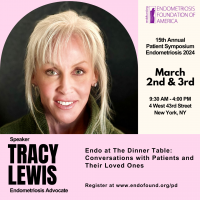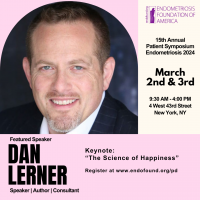
The Society for Women’s Health Research held a conference on Sept. 11 in Washington, D.C., to discuss the latest advances and challenges in endometriosis patient care, educate congressional leaders on the disease, and call for more research funding.
Dr. Dan Martin, EndoFound’s scientific director, was one of several endometriosis advocacy organization representatives to attend. Other participants included scientists, practitioners, professors, and even filmmakers.
“Endometriosis needs funding, and we were there to remind Congress of that,” Dr. Martin said. “Endometriosis research does not get direct funding because it’s seen by Congress as part of the larger National Institutes of Health budget or the Department of Defense budget (due to military personnel who may have the disease).”
The SWHR is “dedicated to promoting research on biological sex differences in disease and improving women’s health through science, policy, and education.” Conference attendees met on Capitol Hill with congressional leaders and their aides to make three specific requests, according to SWHR:
-
Provide a minimum of $51 billion to the NIH in fiscal year 2024.
-
Include in the Senate’s report language for NIH to “advance research to increase early detection, develop more accurate diagnostics and for education to inform health care providers and their patients regarding diagnosis and treatment of endometriosis” in the fiscal year 2024 appropriations.
-
Provide dedicated funding for endometriosis research through the Department of Defense’s Congressionally Directed Medical Research Program in future fiscal year funding.
According to the SWHR, endometriosis costs between $78 billion and $119 billion annually in the U.S. Direct expenses (treatment, surgery, and prescriptions) average $12,119 per patient, and indirect costs (workdays lost and reduced quality of work) average $16,000 per patient.
Before meeting with Congress, conference attendees gave presentations and had discussions about how the disease is treated, clinical and research needs, education opportunities, and patient advocacy needs.
“We must find better answers for patients,” Dr. Martin said. “It’s one thing to say that one in 10 have endometriosis, but what’s the next step? What actions can we take?”
As an example, Dr. Martin offered EndoFound’s ENPOWR program, which educates high school students about endometriosis and provides them with menstrual health resources.
“The question now is what can we add to something like that, something that’s already working in New York and Connecticut, and ramp it up to get it into all the other states?
“Another example is when you’re trying to explain this disease to a person in Congress,” Dr. Martin continued. “You can ask Congress for more research money, but you need to find a congressperson who has a family member with endometriosis and takes it personally. Those are the things we need to do.”
Another idea discussed was clarifying that endometriosis is more than a menstrual condition—it is a systemic disease. Other concepts included developing clinical questions and other screening tools for endometriosis for non-OBGYNs, and providing education and support for caregivers and employers of those with the disease.
“Caregivers, employers, and human resources education and support—that’s a big one,” Dr. Martin said. “Companies have to understand endometriosis to understand the employees who have it.”
But where do these discussions go from here?
“That’s the big question,” Dr. Martin said. “It’s much easier to recognize the problems than determine the answers. Most of us understand the issues, like the delay in diagnosis and the normalization of pain. Now we have to come up with solutions.”
As EndoFound’s scientific director, Dr. Martin said his current plan is to focus on educating patients, caregivers, and medical providers about the multiple presentations of endometriosis, and that those who suffer the worst symptoms need the most attention.
“Some with the disease have few problems, some have problems that are easy to treat, some have problems that take a while to treat, and others have ongoing problems that are very difficult. That last group is the one I’m concerned about,” Dr. Martin said. “Of the 10 percent of women who have endometriosis, that last group is about 10 percent of that, or 1 percent overall. They are the ones with the severely complex issues who need our attention the most.”
To learn more about the SWHR, visit https://swhr.org.









